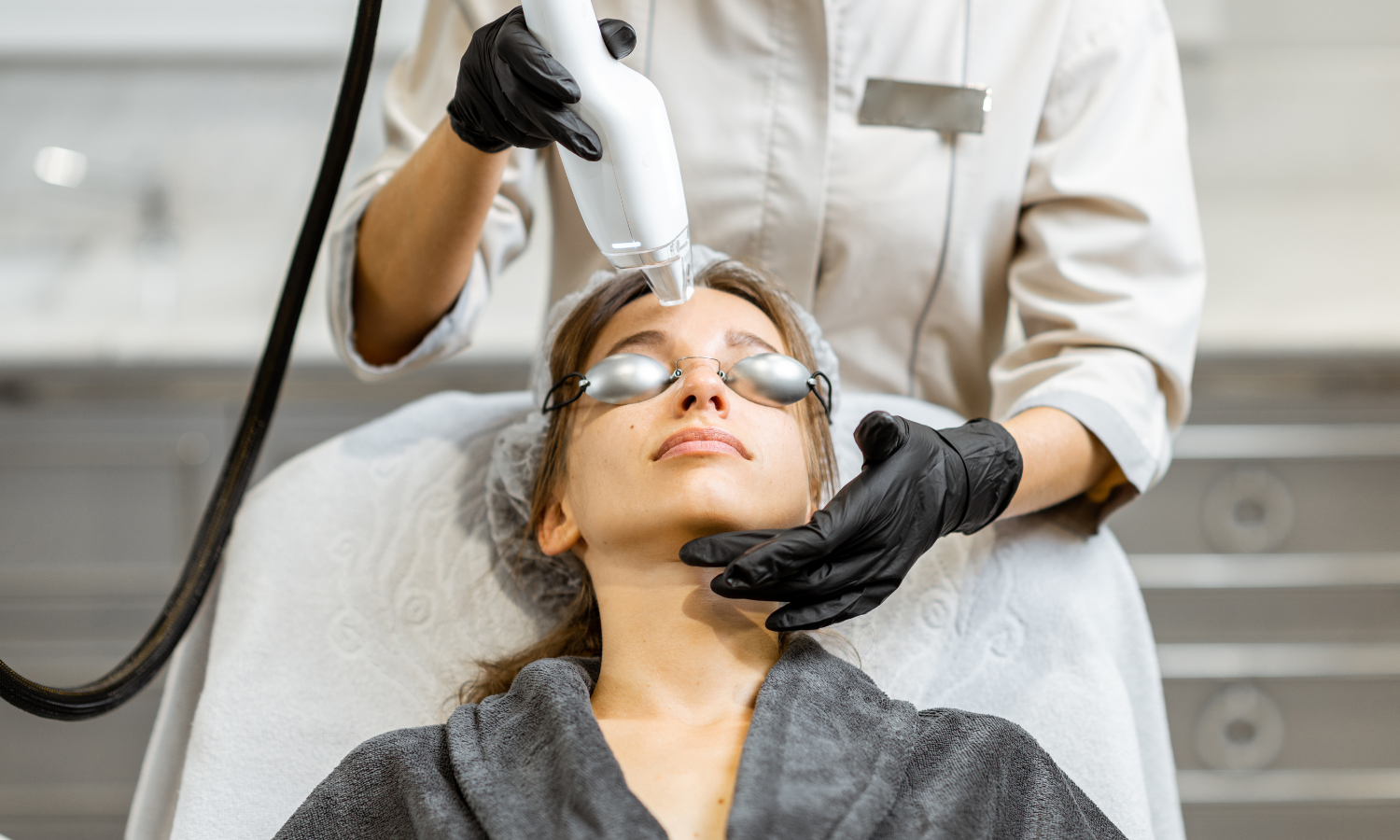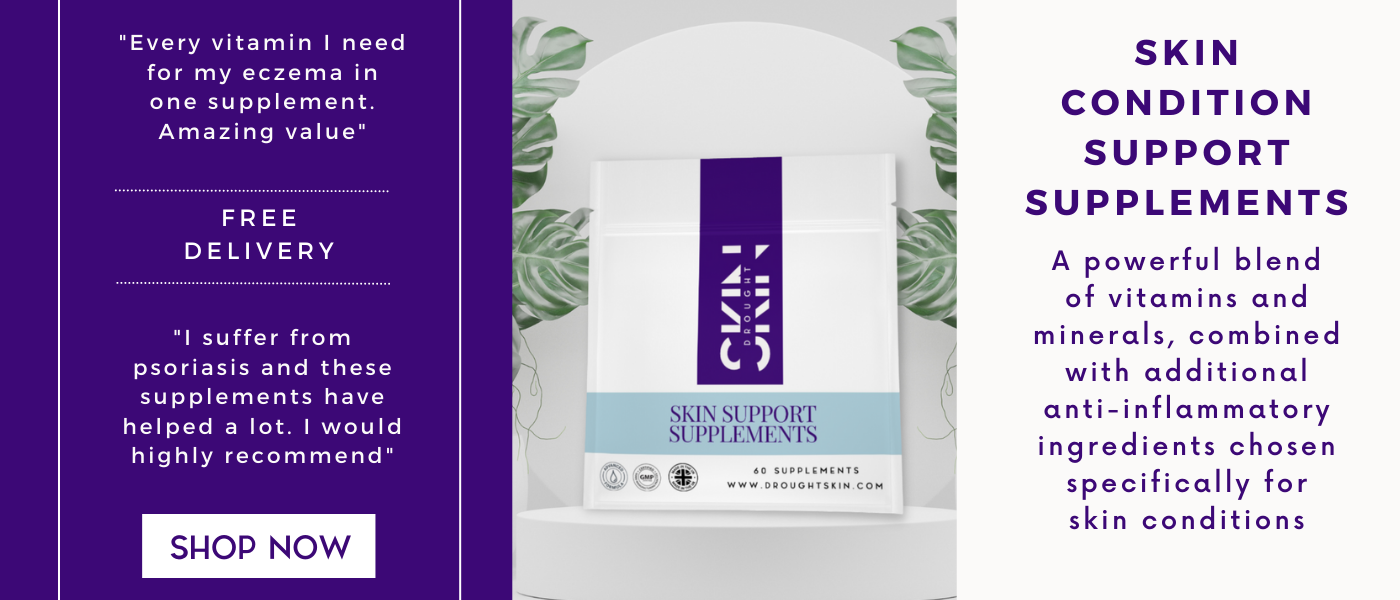Acne Scar Treatments: At Home + Professional Methods
Acne scars can be a frustrating and persistent reminder of past breakouts. Fortunately, there are a variety of acne scar treatments available. From at-home remedies to professional treatments, this guide will provide you with the information you need to choose the best treatment for acne scars.
What are Acne Scars?
Acne scars are the result of acne that has damaged the skin's tissue. This occurs when acne blemishes have become inflamed. Scars can appear as raised or depressed areas on the skin and can be red, brown, or purple in colour. Acne scars are pretty common and typically appear on the face, chest, or back. 1 in 5 people with acne will develop scarring.
Scarring is often due to picking or squeezing spots, genetics, and hormonal changes. With smaller blemishes, the scars that form are often shallow and these heal quite quickly by themselves.
In the case of more severe acne, the inflammation can affect surrounding tissue, creating a deeper scar. The skin fights back by producing collagen fibres in an attempt to heal the skin. These collagen fibres are what cause the raised appearance of scars.
The best way to prevent acne scars is to treat acne as soon as it appears. This can be done through optimised skin care, avoiding picking or squeezing spots, and seeking professional treatment if necessary.
Understand the different Types of Acne Scars
There are several types of acne scars. Each type has a unique appearance and requires different treatment methods.
Before diving into acne scar treatment options, it’s important to understand the different types of acne scars. There are two main categories: atrophic scars and hypertrophic scars. Atrophic scars are depressions or indentations in the skin, while hypertrophic scars are raised and often have a thick, bumpy texture. Within these categories, there are several subtypes of acne scars, including ice pick scars, boxcar scars, and rolling scars. Understanding the type of acne scar you have can help you choose the most effective treatment option.
Boxcar- Boxcar scars tend to be deep, with sharp edges. Typically they occur around the jawline and lower cheeks. The deeper the scar, the harder it is to treat. Boxcar scars tend to respond well to laser therapy and microdermabrasion.
Icepick- This type of scar gets its name from the shape it forms, wide at one side, with a narrower tip. Icepick scars are unfortunately one of the most difficult to treat. They tend to affect areas of the face where the skin is thinner, such as the forehead and cheekbones. They are often small yet deep, making treatment awkward.
Rolling- Rolling scars are found where your skin is thicker, usually the lower cheeks and jawline and have an irregular appearance.
Keloid- Also known as hypertrophic scars, keloid scars are caused by the over formation of collagen fibres. They can be itchy or uncomfortable. These raised scars are often found on the chin area, chest or back. Sometimes discolouration can be mistaken for a keloid scar, but this isn’t the case. Discolouration after acne has healed is normal, and in the majority of cases goes away by itself.
Depressed- Depressed scars are sometimes called atrophic scars. This type causes depressions in the skin, as a result of a lack of collagen being produced. Depressed scars are what give the ‘pitted’ appearance often associated with acne scarring.
A visual examination by a dermatologist is adequate to diagnose acne scarring + type. Dermatologists use four grades to describe the severity of acne scarring:
Macular- A completely flat scar, usually red.
Mild-Less noticeable scars which can be covered by make-up
Moderate-Obvious scars to those close by, which are very difficult to hide
Severe- Scars which can be seen from a distance and are almost impossible to cover
The Best Treatment for Acne Scars
Acne scars can be stubborn, and there is no single treatment that will work for every individual and every different type of scar. Some treatments are not suitable for darker skin tones, such as laser therapy, as they can cause skin lightening.
There are several treatment options for acne scars, including laser therapy, chemical peels, microdermabrasion, and dermal fillers. Each treatment method has its own benefits and drawbacks, and it's important to consult with a dermatologist to determine the best option for your specific needs. Many scars are easier to manage if they are treated as soon as possible after their original formation.
Try at-home remedies such as Exfoliation and Topical Treatments
If you’re looking for a more affordable and convenient option for treating acne scars, there are several at-home remedies you can try. Exfoliation can help improve the appearance of atrophic scars by removing dead skin cells and promoting cell turnover. You can use a gentle scrub or chemical exfoliant like alpha-hydroxy acids (AHAs) or beta-hydroxy acids (BHAs). Topical treatments like vitamin C serums, retinoids, and niacinamide can also help improve the appearance of acne scars over time. However, it’s important to note that at-home remedies may not be as effective as professional treatments for more severe acne scars.
Consider professional treatments like Chemical Peels and Laser therapy
For more severe acne scars, professional treatments like chemical peels and laser therapy may be necessary. Keep in mind, these can be very expensive if done privately. Costs can range from £100 to the thousands. It may be worth discussing your NHS options with your doctor.
Chemical peels involve applying a solution to the skin that causes it to peel off, revealing smoother, more even skin underneath. Chemical peels are more effective on milder scars, and can often take up to 6 treatments to see results.
Laser therapy uses focused beams of light to target and break down scar tissue, stimulating the growth of new, healthy skin cells. In cases where collagen fibres have formed, your dermatologist may recommend laser resurfacing. Laser treatment has a high success rate at treating acne scarring, with minimal pain. However, it can be expensive and require multiple treatments. This treatment is often recommended for those with widespread scarring.
It’s important to consult with a dermatologist to determine the best treatment plan for your specific needs.
Don't forget about the Importance of Sunscreen and Skincare
While treating acne scars is important, it’s also crucial to prevent further damage to the skin. Sunscreen is a must-have in any skincare routine, as exposure to UV rays can worsen the appearance of scars and lead to further skin damage. Look for a broad-spectrum sunscreen with an SPF of at least 30 and apply it daily, even on cloudy days. Sunscreen is crucial for preventing further damage to acne scars. UV rays can cause scars to darken so it’s important to reapply SPF every two hours you are exposed.
You should also incorporate a gentle skincare routine that can help improve the overall health and appearance of your skin. Cleansing, moisturising, and exfoliating regularly can help prevent new breakouts and promote skin cell turnover, leading to smoother, clearer skin.
Be Patient and Consistent in your Treatment Approach
Treating acne scars takes time and patience, so it’s important to be consistent in your approach. Whether you’re using home remedies or seeking professional treatments, it’s important to stick with your routine and give your skin time to heal. Don’t expect overnight results, as it can take weeks or even months to see significant improvement. Keep track of your progress and adjust your treatment plan as needed. With patience and consistency, you can achieve smoother, clearer skin and say goodbye to acne scars for good.
Other Acne Scar Treatments
Avoid Touching/Picking-Squeezing, scratching, and touching your skin, in general, can spread bacteria and cause skin damage. This can lead to scarring, and worsen existing scarring.
Dermabrasion/Microdermabrasion- Dermabrasion involves a dermatologist or qualified facialist removing the top layer of skin using professional tools. Microdermabrasion is very similar but tends to use machinery rather than manual hand tools. This is a quick and effective method, but some sufferers find the treatment a little painful and can suffer from redness afterward. This is usually reserved for more severe cases of acne scarring. Dermabrasion works well on boxcar and rolling scars.
Quit Smoking- If you are a smoker, you should be aware that tobacco increases your chances of acne scarring, and can worsen the appearance of existing scars.
Dermal Fillers- Fillers are an option for those with ‘pitted scars’. They work by injecting a substance under the scar which lifts the skin upwards, creating a smoother appearance. The substance can be the patient’s own fat, collagen, or a filling agent. Fillers can be very effective, however, there are side effects to consider such as swelling and bruising. Many fillers often only give temporary results, lasting up to 18 months. Dermal fillers work best on boxcar and rolling acne scars.
Excision- Excision involves a dermatologist or doctor cutting the scar away and closing the wound with stitches. This procedure is typically only considered for those with severe acne scarring.
Steroid Injections-Steroids can be injected into scars to flatten them and soften the scarred tissue. This treatment is usually considered by those with keloid scarring. Although effective, it is worth keeping in mind that over time steroid use can thin the skin.
Treat Existing Acne- Unfortunately, treatment for acne and acne scars can interfere with one another, so it’s important that your skin is as clear as possible prior to seeking professional treatment. Again, your dermatologist will be best placed to advise if you are suitable for treatment and how best to heal existing acne patches.
Cryosurgery- Scar tissue is frozen using liquid nitrogen. The tissue then dies and falls off. Be aware that cryosurgery can cause permanent patches of skin lightening, which is why it should be avoided by those with darker skin tones.
Medicated Topical Treatments- Prescribed creams can be an effective treatment for acne scarring. These creams typically contain Alpha hydroxy acids, Lactic acid, Retinoids, and/or Salicylic acid.
Camouflage Make-Up- There are a variety of amazing concealers out there for covering scars and even tattoos! These are a good temporary option for those suffering a grade one or two acne scar, who are feeling self-conscious.
Essential/Natural Oils- Many people with acne scars look to natural treatments for various reasons, and some do report various degrees of success. However, keep in mind that these treatments are not scientifically proven. Coconut oil is thought to help prevent scarring when used as a natural moisturiser, but is best avoided if you have oily skin. Tea tree oil can also be used to even skin texture and help reduce the appearance of scarring.
Apple Cider Vinegar- Apple cider vinegar can be used as a toner for those with acne or acne scarring. Some users have reported that this solution has helped reduce the appearance of scarring. Make sure you dilute the apple cider vinegar first, as at full strength this can cause burns or irritation.
Botox- Botox is a relatively new treatment for acne scarring. It works by injecting botox into the surrounding areas of the skin, causing it to relax and improve the appearance of the scar. This is a temporary treatment, with top-ups required around every 6 months.
Acupuncture- Acupuncture is a more natural approach to acne and scarring. It works by regulating sebum production. Some practitioners also target certain body areas thought to be related to hormones, in order to treat hormonal acne. Not all practitioners will treat acne scars. Those who do, practice a technique called ‘facial pecking’ which breaks up old scar tissue. Acupuncture needles can reach the deepest layer of skin, which advocates claim makes it an effective solution.



